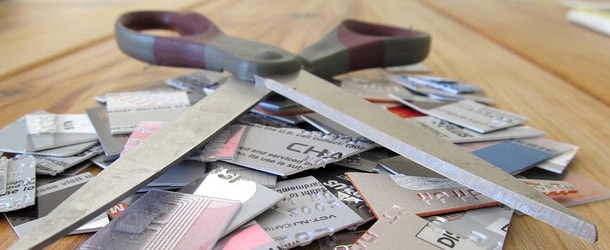An Alternative to Paying the Mortgage with a Credit Card

This week, I read an article in the WSJ about paying the mortgage with a credit card.
Either things are really bad in the economy, or things are really bad at the WSJ. Or they’re about to be.
Regardless, it’s not a great strategy to put the mortgage on plastic, which is why most card issuers don’t allow it.
Ultimately, they don’t want you paying your debt with other debt, especially secured with unsecured.
But there might be a way to still keep your cash flow without putting the mortgage payment on a card.
Take Advantage of the Many 0% APR Credit Cards Out There to Shift Your Spending
When you think about making this payment or that payment, it all basically comes from the same place. Your bank account.
So you can indirectly keep your cash flowing while paying the mortgage via traditional means if you shift other spending.
To achieve this, you just need to offset other purchases. This can be achieved by pushing those other expenses to a 0% APR credit card.
Many of these credit cards offer interest-free financing for anywhere from 12 to 18 months at the moment.
This buys you time and allows those other expenses, which are totally allowed (and expected) to be paid with a credit card, to funnel to your 0% APR card.
For example, say you’ve got a $2,500 monthly mortgage payment and another $2,000 in monthly expenses.
We’ll call it gas, groceries, utilities, and other necessities, along with some discretionary purchases, such as eating out or going to the movies.
Instead of putting all those charges on your regular credit cards, which must be paid in full each month to avoid interest, you can redirect them to a 0% APR card.
This frees up that cash for more important things, such as the mortgage.
Yes, you’re still paying the same amount each month, but you’re not dealing with any extra fees for using a third-party payment processing company like Plastiq, which can be nearly 3%.
On a $2,500 mortgage payment, we’re talking $75. Ouch!
And you just need to make the minimum payment each month on the 0% APR credit, which frees up money for the mortgage.
Even Better, Earn Interest on Your Money with Some Basic Arbitrage
Many years ago, pre-Great Recession, interest rates on savings accounts were in the 5% range.
This allowed savers to earn a decent return on any money in a high-yield savings account.
Then as you probably know, savings rates went to near-zero as mortgage rates hit record lows.
This is the double-edged sword of low interest rates. It’s great if you have a low fixed-rate mortgage, but you don’t earn anything in the bank for parking your money.
With 8% mortgage rates now a thing, and the 10-year bond yield close to 5%, banks are back to offering decent savings rates.
For example, Discover is currently offering 4.30%, as is Capital One. And Ally Bank is offering 4.25%, while Marcus has an even higher 4.40%.
This means you can park your money again and earn a decent yield, whether it’s 4% or perhaps as high as 5%.
So those who put their regular spending on a 0% card can keep more of their money in a high-yield savings account since only a small minimum payment is due each month.
That allows it to grow while everyday purchases accrue zero interest or finance charges during the promotional period.
Just take note of how long the 0% APR is offered. Once it comes to an end, you need to pay off the entire balance in full to avoid any interest.
Someone who is aggressive could put most spending on plastic (other than the mortgage) and keep as much as possible in the bank account earning 4-5%.
It’s Not Wise to Pay a Fee to Pay Your Mortgage
At the end of the day, it’s a pretty raw deal to have to pay money to make a mortgage payment.
Or to have pay a fee for any payment for that matter. The Consumer Financial Protection Bureau (CFPB) refers to this as a “pay-to-pay fee.” And often it’s not even legal to charge such fees.
This is why you should avoid paying your mortgage by phone or even using a debit card to pay the mortgage, as it can sometimes be accompanied by a fee as well.
Of course, I assume folks are in a crunch if there’s the need, other than the points and miles crowd who might want to put a big purchase on plastic to earn a bonus.
But there is perhaps a better way, as outlined above. Just be careful not to rack up debt thinking you’ve got more money than you actually do!
And remember that 0% APR period will come to an end, at which point the APR will likely greatly exceed that of a home loan. So it must be paid off.
Another issue with not paying your mortgage with a bank account is there could be a delay or a mix up.
You won’t want to miss a mortgage payment as a result of some third-party company. It can also get messy if your mortgage payment history is coming from different sources.
So it’s best to just pay the mortgage consistently from the same bank account to avoid any costs or unexpected surprises.
Comments are closed.